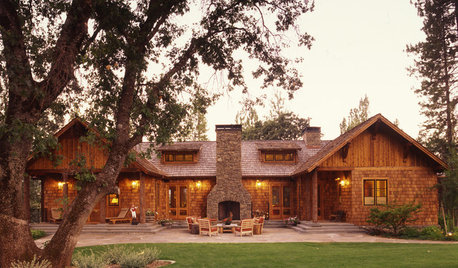What I learned from the evil frost - Please share!
irisaddict
17 years ago
Related Stories

DECORATING GUIDES10 Design Tips Learned From the Worst Advice Ever
If these Houzzers’ tales don’t bolster the courage of your design convictions, nothing will
Full Story
FUN HOUZZEverything I Need to Know About Decorating I Learned from Downton Abbey
Mind your manors with these 10 decorating tips from the PBS series, returning on January 5
Full Story
MOST POPULAR15 Remodeling ‘Uh-Oh’ Moments to Learn From
The road to successful design is paved with disaster stories. What’s yours?
Full Story
FEEL-GOOD HOME12 Very Useful Things I've Learned From Designers
These simple ideas can make life at home more efficient and enjoyable
Full Story
MOTHER’S DAYWhat We've Learned From Mom About Home
Share cherished memories as Houzzers recall the special traits, insights and habits of their mothers
Full Story
CONTRACTOR TIPS6 Lessons Learned From a Master Suite Remodel
One project yields some universal truths about the remodeling process
Full Story
WHITE KITCHENS4 Dreamy White-and-Wood Kitchens to Learn From
White too bright in your kitchen? Introduce wood beams, countertops, furniture and more
Full Story
WORKING WITH PROSInside Houzz: What You Can Learn From a Houzz Photo
Get access to the designer's info, product names, other photos in the project and much more by clicking on a Houzz image
Full Story
KIDS’ SPACESShare Tactics: Great Ideas for Shared Kids' Rooms
Maintain peace and maybe even inspire togetherness with decorating strategies from a designer with seven grandchildren
Full Story
SUMMER GARDENINGHouzz Call: Please Show Us Your Summer Garden!
Share pictures of your home and yard this summer — we’d love to feature them in an upcoming story
Full StorySponsored
Your Custom Bath Designers & Remodelers in Columbus I 10X Best Houzz



kathy003
ragdollblue7
Related Discussions
I dont get it. I covered my trees to protect them from frost/snow
Q
Newbie - Lessons learned this year!!! What have you learned?
Q
What I learned growing Plumerias In 2012
Q
What I've learned from my mistakes
Q
maternut
katzswoman
donna_stevens
gailgardens
katzswoman
ladybug37091
april_h_o April Moore
garden_grace
april_h_o April Moore
tngreenthumb
lh_midtn
Jan_Hobbs
april_h_o April Moore
irisaddictOriginal Author
Kitchenlady (Tennessee, Zone 7a)
garden_grace
cfb123
madmouser
madmouser
steveh_2007
Evan
kathy003
saries
atokadawn
hick
hermitonthehill
Jan_Hobbs
bvt2007
hermitonthehill